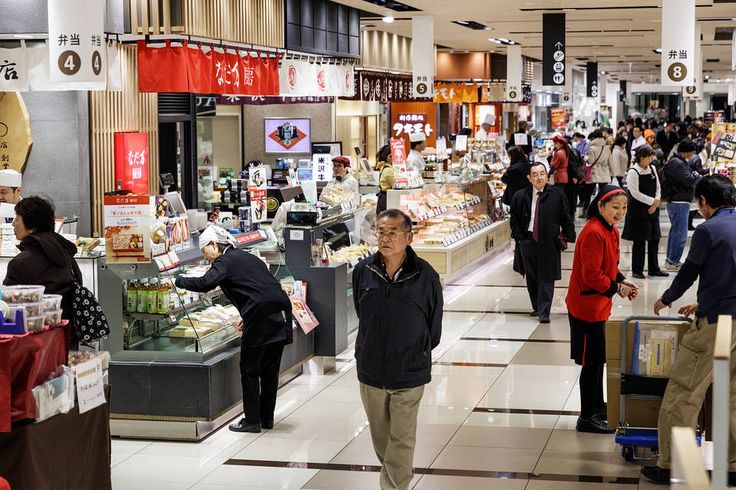

Department Stores: Where Convenience Meets Quality for Daily Living
Department stores have long been a staple in the retail industry, offering a wide range of products under one roof. These stores have played a significant role in shaping the way we shop and have become synonymous with convenience and variety. In this article, we will explore the rise of department stores, their advantages over other retail outlets, and their future in the ever-evolving world of retail.
The Rise of Department Stores: A Brief History
The concept of department stores can be traced back to the 19th century, when large-scale retail establishments began to emerge in major cities. The first department store, Bon Marché, opened its doors in Paris in 1852. It was a revolutionary concept at the time, as it offered a wide range of products under one roof, including clothing, accessories, and household goods.
Over time, department stores evolved and expanded their offerings. They became more than just places to shop; they became destinations for socializing and entertainment. In the early 20th century, department stores in the United States, such as Macy’s and Bloomingdale’s, became iconic symbols of American consumerism.
The Convenience Factor: Why Department Stores are a One-Stop Shop
One of the main advantages of shopping at department stores is the convenience they offer. Instead of visiting multiple stores to find everything you need, department stores provide a one-stop shopping experience. Whether you’re looking for clothing, accessories, home décor, or electronics, you can find it all in one place.
This convenience factor is especially appealing to busy individuals who don’t have the time or energy to visit multiple stores. Instead of spending hours driving from store to store, they can simply visit a department store and find everything they need in one trip.
The Quality Advantage: How Department Stores Ensure Customer Satisfaction
Department stores understand the importance of customer satisfaction and go to great lengths to ensure that their products meet high-quality standards. They carefully select the brands and products they carry, conducting thorough quality control checks to ensure that customers receive only the best.
In addition to quality control measures, department stores also prioritize customer satisfaction through their return and exchange policies. If a customer is not satisfied with a purchase, they can easily return or exchange it, ensuring that they are happy with their shopping experience.
The Variety of Products: From Clothing to Home Décor
One of the biggest advantages of shopping at department stores is the wide range of products they offer. From clothing and accessories to home décor and electronics, department stores have something for everyone.
This variety is particularly appealing to shoppers who prefer to have multiple options to choose from. Instead of visiting different specialty stores for each item on their shopping list, they can find everything they need in one place.
The Competitive Pricing: How Department Stores Offer Value for Money

Contrary to popular belief, department stores often offer competitive pricing on their products. They have the advantage of buying in bulk, allowing them to negotiate better deals with suppliers and pass on the savings to customers.
In addition to bulk buying, department stores also employ various pricing strategies to attract customers. They often have sales and promotions throughout the year, offering discounts on popular items. This allows customers to get more value for their money compared to other retail outlets.
The Shopping Experience: How Department Stores Create a Pleasant Atmosphere
Department stores understand that shopping is not just about buying products; it’s also about the overall experience. They invest in creating a pleasant atmosphere for shoppers, with well-designed store layouts, attractive displays, and comfortable seating areas.
The ambiance of a department store plays a crucial role in attracting customers and keeping them engaged. It sets the tone for the shopping experience and can make a significant difference in how customers perceive the store.
The Customer Service: How Department Stores Prioritize Customer Needs
Customer service is a top priority for department stores. They understand that providing excellent customer service is essential for building long-term relationships with customers and ensuring their satisfaction.
Department stores invest in training programs for their staff to enhance their customer service skills. They teach them how to engage with customers, answer their questions, and provide assistance when needed. This personalized approach to customer service sets department stores apart from other retail outlets.
The Loyalty Programs: How Department Stores Reward Regular Shoppers
To encourage repeat business, department stores often offer loyalty programs to reward regular shoppers. These programs typically offer benefits such as exclusive discounts, early access to sales, and personalized offers.
Loyalty programs not only incentivize customers to continue shopping at department stores but also help stores gather valuable data about their customers’ preferences and shopping habits. This data can then be used to tailor marketing campaigns and improve the overall shopping experience.
The Online Presence: How Department Stores are Adapting to the Digital Age
In today’s digital age, having an online presence is crucial for any retail business, including department stores. Many department stores have embraced e-commerce and have developed robust online platforms where customers can shop from the comfort of their homes.
Department stores use various strategies to enhance their online presence, such as offering online-exclusive deals, providing detailed product descriptions and images, and offering convenient delivery options. This allows them to reach a wider audience and cater to the needs of customers who prefer online shopping.
The Future of Department Stores: What to Expect in the Coming Years
The future of department stores is uncertain, as they face increasing competition from online retailers and changing consumer preferences. However, there are strategies that department stores can adopt to stay relevant in the coming years.
One strategy is to focus on creating unique in-store experiences that cannot be replicated online. This could include hosting events, offering personalized styling services, or creating interactive displays that engage customers.
Another strategy is to leverage technology to enhance the shopping experience. This could include implementing augmented reality (AR) and virtual reality (VR) technologies to allow customers to try on clothes virtually or visualize how furniture would look in their homes.
Department stores have played a significant role in the retail industry, offering convenience, variety, and quality to customers. While they face challenges in the digital age, there are opportunities for department stores to adapt and thrive. By focusing on customer satisfaction, creating unique shopping experiences, and embracing technology, department stores can continue to be a vital part of the retail landscape.